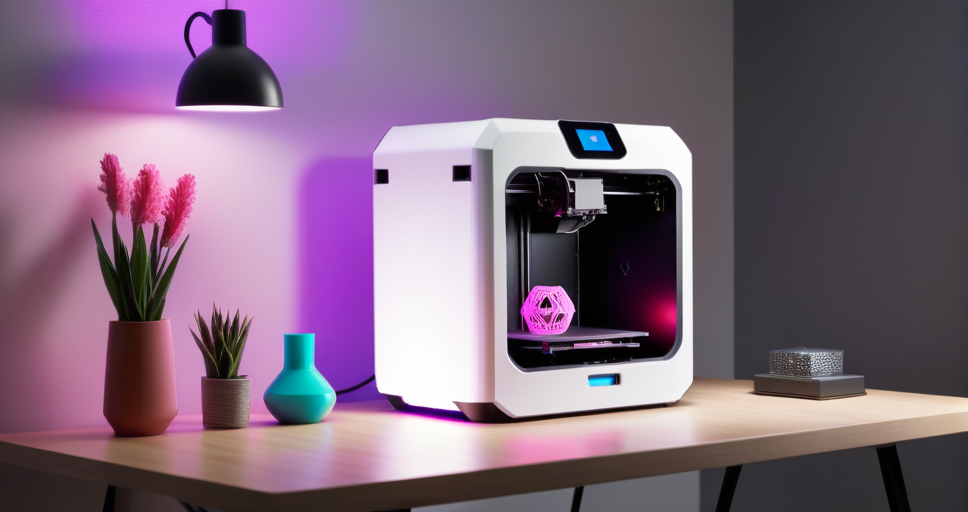Archivio per Categoria Stampa 3D News
- Home /
- Archivio per categoria "Stampa 3D News"
Vikela: Reinventing Body Armor Through 3D Printing
this is index.phpThe Belfast-based start-up Vikela is transforming the body armor industry using 3D printing technology to deliver customizable, lightweight, and highly adaptable protection solutions.
Direct Metal 3D Printing: Revolutionizing the Jewelry Industry
this is index.phpDirect metal 3D printing in jewelry stands at a pivotal intersection between the traditional craftsmanship valued in jewelry making and the innovative potential of advanced technology.
A New Horizon for Platinum Jewelry
Scottish jewelry designer Maeve Gillies highlights the transformative potential of direct 3D printing with her exquisite Tùsaire collection, named after the Scottish Gaelic word for “pioneer.” Sponsored by Platinum Guild International, this innovative 30-piece collection showcases intricate designs that traditional manufacturing simply cannot replicate.
Gillies explains, “My designs integrate the digital surface native to 3D printing, aiming to highlight the technological moment we’re experiencing and demonstrating the very best capabilities of printed platinum.”
Platinum and Laser Powder Bed Fusion Technology
The Tùsaire collection is created using laser powder bed fusion (LPBF) technology, a metal 3D printing process used by Italy-based service provider ProGold. This method offers a groundbreaking advantage by enabling large, lightweight platinum pieces, traditionally challenging due to the metal’s density and cost.
Gillies states, “This technology pushes platinum jewelry into realms previously inaccessible, especially larger silhouettes that remain lightweight, wearable, and more affordable.”
Advantages of 3D Printing for Complex Jewelry Designs
Manufacturers gravitate toward metal LPBF because it allows for intricate lattice structures, hollow shapes, and varied wall thicknesses. This results in less raw material use, significantly reducing costs and weight. Jewelry featuring these complex geometries, like the hollow gold rings produced by ProGold, demonstrates the practical efficiency of this method compared to traditional casting.
ProGold’s sales manager, Luca Dal Sasso, notes, “For certain geometries that prove challenging with casting, clients prefer the precision and minimal defects of direct metal 3D printing.”

Bridging Craftsmanship and Innovation
Despite technological advancements, Gillies emphasizes the irreplaceable role of traditional jewelry-making skills. Each Tùsaire piece is meticulously hand-finished and set with stones, illustrating a perfect synergy between traditional craftsmanship and technological precision.
Gillies reflects, “Jewelry embodies a personal connection between maker and wearer. It’s crucial to balance technological possibilities with skilled craftsmanship to maintain this intimate connection.”
Industry Adoption and Future Prospects
The growing availability of platinum powder for LPBF, along with increasing compatibility of metal 3D printers like Renishaw’s RenAM 500S Flex and Desktop Metal’s binder jet systems, accelerates industry adoption. Companies like ProGold now frequently receive specific demands for directly printed jewelry due to advantages in efficiency and quality.
Gillies foresees 3D printing becoming integral to jewelry design education, combining digital innovation with foundational hand skills. She predicts, “Future jewelers will leverage technology and AI for personalization, making creative expression even more essential.”
Artistic Expression Meets Technological Excellence
The Tùsaire collection isn’t solely a commercial venture but a creative exploration that blends Gillies’ Celtic heritage with modern technology. By contrasting polished surfaces with intentionally visible raw printed textures, Gillies artistically represents the dynamic tension between ancient aesthetics and contemporary innovation.
Gillies concludes, “This collection is a tribute to platinum’s potential and the power of 3D printing. It’s about merging my heritage with new possibilities, inviting everyone to reconsider what’s achievable in jewelry design.”
The Tùsaire collection thus symbolizes a pioneering leap toward the future of jewelry-making, embracing technological advancement while honoring traditional craft.
3D Printing: A Game-Changer in Industrial Manufacturing
this is index.phpRevolutionizing Production with Additive Manufacturing
In recent years, 3D printing has evolved from a niche technology into a disruptive force in industrial manufacturing. Its adaptability allows for rapid prototyping, custom production, and the creation of complex geometries without the need for costly molds or extensive tooling. These advantages have led to widespread adoption across automotive, aerospace, medical, and consumer goods industries.
Stampanti 3D Domestiche: Cosa Ostacola la Rivoluzione nelle Case?
this is index.phpLa stampa 3D è una tecnologia rivoluzionaria che promette di cambiare radicalmente il modo in cui creiamo e utilizziamo oggetti. Nonostante il suo potenziale straordinario e l’entusiasmo iniziale, le stampanti 3D non sono ancora diffuse quanto i computer o le televisioni nelle abitazioni. Ma quali sono le ragioni di questa lenta adozione?
Il Futuro delle Calzature: Le Scarpe 3D Stampate tra Sostenibilità, Stile e Innovazione
this is index.phpLe scarpe stampate in 3D stanno rivoluzionando il mondo della moda e delle calzature, aprendo nuove possibilità in termini di sostenibilità, personalizzazione e stile. Tuttavia, molte aziende si scontrano con la sfida delle edizioni limitate, limitando l’accesso a questa tecnologia a pochi prodotti esclusivi.
Winkle’s Official Retailer













